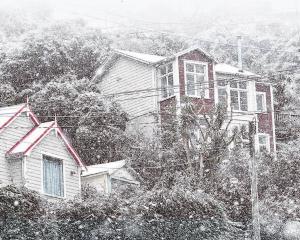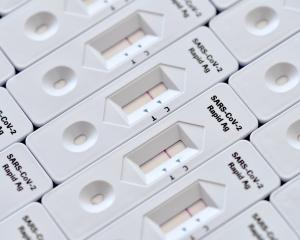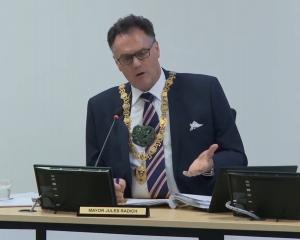The next stage in the controversial process to decide the future of the New Zealand flag has begun, with the Government-appointed Flag Consideration Panel going on the road to encourage New Zealanders to ''share what they stand for'' ahead of two referendums on the topic.
The 12-strong panel was chosen by a cross-party group of MPs and includes former Dunedin mayor Peter Chin.
Its nationwide tour ends at the beginning of July.
The public is also being encouraged to submit words about their values, as well as their own flag designs, through a range of promotional material and forums with a hyped-up ''feel-good'' flavour.
The names of respondents can even be added to a national flagpole in Wellington, upon which the current or new flag will fly.
The suggested designs and values will be considered by the panel, which will select a shortlist of four flag options in September.
Two binding postal referendums will then be held: one in November or December to determine the preferred alternative flag, and one in March to decide between the current flag and the alternative.
Our current flag, an altered Blue Ensign with the Union Jack and Southern Cross, has been in use since 1869 and was adopted as the national flag by Parliament in 1902.
The Government announced plans to review the flag last year.
Critics believe the review is simply the prime minister's vanity project.
Mr Key has said he believes the time is right for New Zealanders to consider changing the design to one that better reflects our status as a modern, independent nation.
But opinion polls have indicated the majority don't want to change our flag.
There has been vehement opposition from some quarters, notably the RSA, which was outraged by the deadline for the first public feedback (submissions to the New Zealand Flag Referendums Bill, necessary to create the binding referendum process) of April 23 - two days before Anzac Day.
The RSA and others believe the process is unwanted and the timing offensive and distracting as the country commemorates the centenary of the Gallipoli landings and other pivotal World War 1 battles, in which many thousands lost their lives fighting for king and country under the current flag.
There has also been outrage about the cost of the process - $25.7 million, which critics say has been exacerbated by the order in which the referendums will be held.
The Government's reasoning is that the public cannot vote to change the flag if they don't know what the alternative is.
It increasingly feels the Government is flogging a dead horse, however.
At the first of the roadshow ''engagement hui'' in Christchurch at the middle of May, the panel outnumbered the public.
The first official workshop in Christchurch attracted about 50 people, whose opinion was reportedly divided, and the Dunedin workshop this week attracted about 25 people, who appeared sceptical about the process.
The promotional material certainly flies the flag for worthy values (the words equality, integrity, freedom, respect, Commonwealth, heritage and history loom large on the images used), but the full text of many of the online submissions appears to contain more about retaining the flag, spending the money on more pressing issues, respecting fallen soldiers and the results of other referendums than desire for change.
And the majority of those who addressed the select committee hearing submissions on the referendum Bill were opposed to changing the flag.
Whatever the feelings, there is no escaping the fact the process is under way.
It is a democratic one at least, and the results will be binding, which is not always the case in a referendum.
New Zealanders have the chance to decide, for the first time in our history, the make-up of our most important symbol of national identity.
Everyone should have their say in all possible forums - whether it is for the status quo or change.
For the answer will be literally blowing in the wind - on public buildings, monuments, ceremonies and sporting and cultural events - for many years to come.












